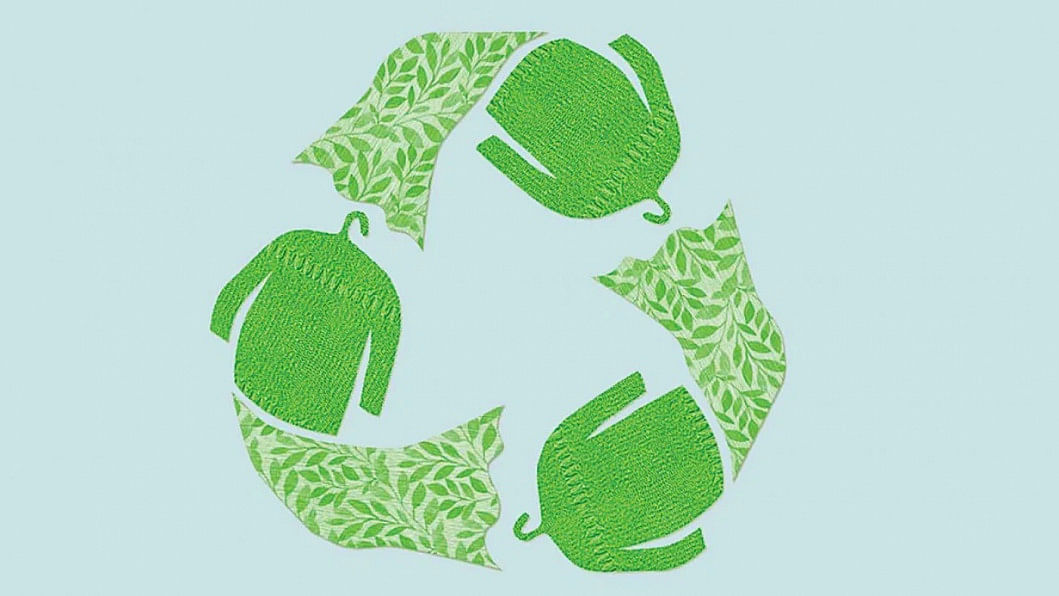There is a way to decarbonise RMG manufacture

How can Bangladesh decarbonise its garment industry? How can we reduce CO2 emissions associated with our industry? What do we, as manufacturers, need to do to enable our clients to meet their net zero targets?
I hear lots of talk about the need to reduce supply chain emissions in the fashion industry. But I have yet to know of any meaningful, practical solutions. However, a recent study caught my eye.
The study assessed the potential impact of electrifying textile and apparel supply chains. The study was commissioned by the Outdoor Industry Association and funded by US-American clothing brand Patagonia.
The study explored the potentials of saving energy, reducing CO2 emissions, and the costs for electrification technology pathways. It was based on evidence gathered from the textile industries of China, Japan, and Taiwan. Though it is a shame that the RMG industry of Bangladesh was not studied under this project, the researchers say their findings are applicable to other countries. They essentially wanted to gain insight into reducing emissions in the apparel industry's supply chain by shifting from carbon-intensive thermal heating processes (currently powered by fossil fuels) to more efficient and cleaner electrified processes where low- or zero-carbon electricity is used.
A major challenge for the global textile industry in lowering its carbon footprint is its heavy reliance on thermal energy – steam and hot water – for industrial processes. Bangladesh's own garment industry is no stranger to the use of such processes.
In textile plants, heat is often delivered as steam that is mainly generated by combustion boilers using fossil fuels. A significant amount of thermal energy is lost during steam generation and distribution (around 25 to 30 percent). This is a dreadful level of waste, and we have to accept that the clothing production process in its present format is highly inefficient.
The aforementioned study has identified and analysed four separate electrification pathways which are believed to have the ability to lower the CO2 footprint of the textile industry.
These tested pathways are: 1) industrial heat pumps (only for the textile wet-processing industry); 2) electric steam boilers; 3) electric thermal oil boilers; and 4) electric processing equipment (only for seven textile wet-processing processes).

One of the main findings of this study was that shifting to industrial heat pumps can lead to substantial energy reductions, reduced CO2 emissions, and lower costs compared to conventional systems.
In fact, the broader results showed that electrification can substantially decrease the total annual energy demand in the textile industry under all four electrification technology pathways.
For instance, the total technical annual energy saving potential through the application of industrial heat pumps in textile wet-processing plants (assuming a 100 percent adoption rate) is estimated to be around 270, 7.0, and 7.3 petajoules (PJ) in China, Japan, and Taiwan, respectively. This is equal to around one-third of the total fuel used in the textile industry in these three economies!
In terms of the impact on CO2 emissions resulting from electrification, this is highly dependent on the carbon intensity of the electricity used with the electrified process.
The study looks at CO2 emissions reductions resulting from electrification under each of the four electrification technology pathways in 2050. It found, for example, the total annual CO2 emissions reduction potential from 100 percent adoption of electric steam boilers or industrial heat pumps in the Chinese textile industry is around 29.8 and 24.9 million tonne (Mt) of CO2, respectively, per year in 2050. These are equal to around 59 percent and 49 percent of total fuel-related annual CO2 emissions from the textile industry in China in 2021.
These are remarkable figures, and the options outlined in this study surely demand further investigation by industry leaders and regulators in Bangladesh.
So, how can Bangladesh shift to production processes which reduce emissions and use less energy?
Fortunately, the authors of this study have made some practical recommendations. The first is to increase renewable electricity generation. Suppliers in Bangladesh should be working closely with fashion retailers to increase investment in onsite and offsite renewable electricity generation projects. This includes collaboration with government officials and power utilities as well as industry groups to communicate private sector demand for increased access to renewable electricity supply.
A second recommendation is to enhance and modernise the electric grid. The study states that, as more renewable electricity is generated, it is important to ensure these additional renewable resources can connect to the transmission and distribution system. This will require grid upgrades that can manage the overall increased clean electricity volume alongside the distributed renewable generation. Enhancements should also include resilience measures to protect against severe weather threats to the grid – an issue we are too familiar with in Bangladesh.
The study emphasises on the need to promote the development of electrification technology and its adoption in the textile sector. Apparel brands can also provide financial incentives to their textile suppliers to encourage the electrification of process heating in their plants. Such collaboration between Bangladeshi suppliers and our customers to promote electrisation technology is something we would like to see more of.
The final recommendation is to promote pilot and demonstration projects. The researchers suggest that working in partnership with various stakeholders, textile brands and manufacturers should prioritise the further development, demonstration, and scaling of the new electrification pathways focusing first where reduction potentials are greatest and most immediate – that is, heat pumps and drying and heat setting equipment.
Despite a lack of practical solutions being offered on how we can decarbonise garment supply chains, we now have guidance based on real-life examples, including best practice recommendations. At the very least, our industry should be taking a closer look into whether any of these solutions can be implemented. Why not start in 2023?
Mostafiz Uddin is the managing director of Denim Expert Limited. He is also the founder and CEO of Bangladesh Denim Expo and Bangladesh Apparel Exchange (BAE).

 For all latest news, follow The Daily Star's Google News channel.
For all latest news, follow The Daily Star's Google News channel. 








Comments